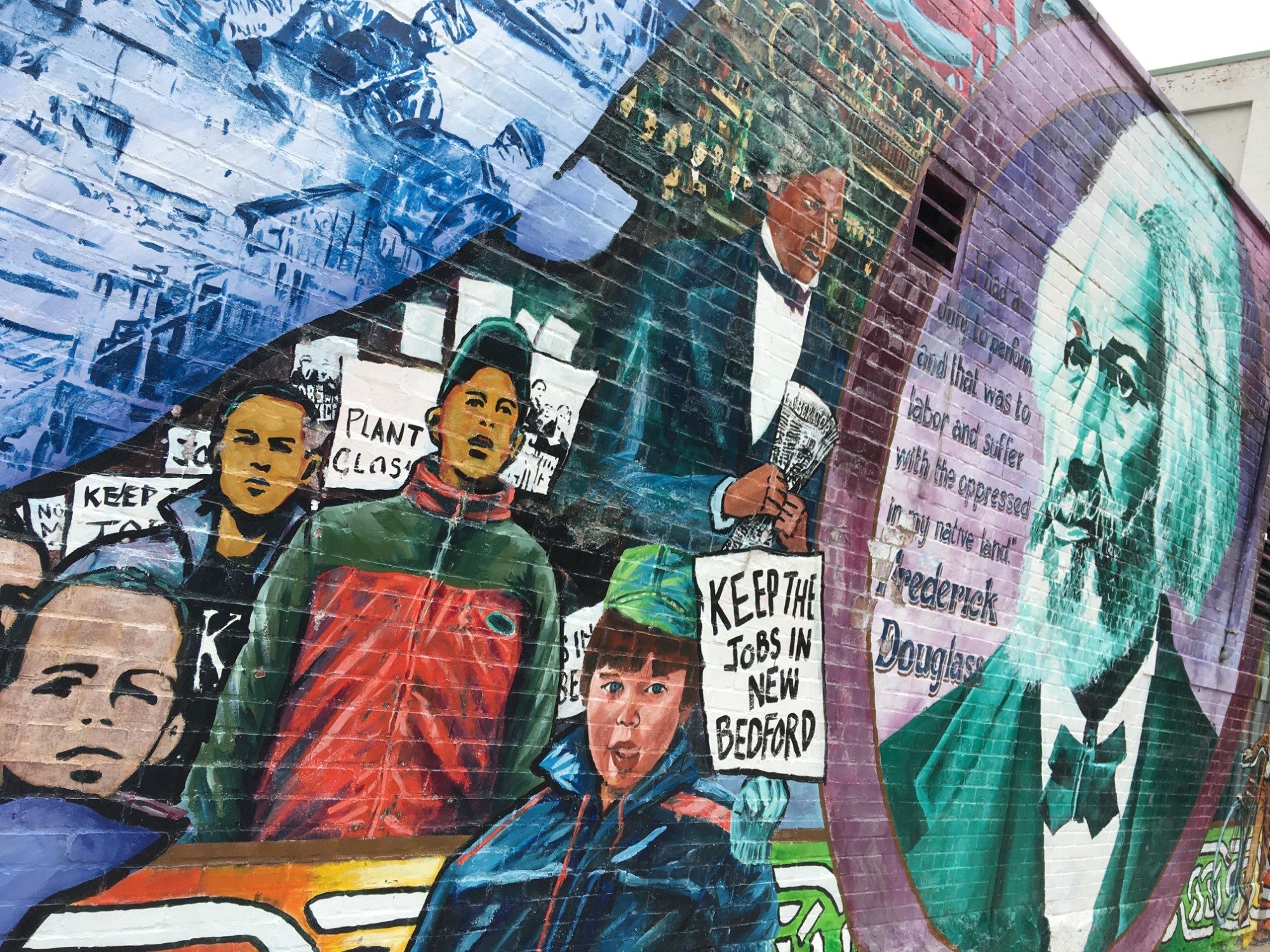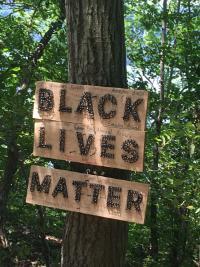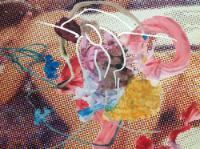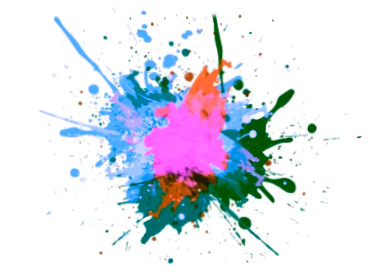Courses at Teachers College
Visual Methods and Education
BBSR 4002
Moving “beyond words,” this course aims to provide a range of qualitative visual research tools to invoke different stories, views, voices, embodiments, and experiences.

Images convey in powerful ways. The ubiquity of images in people’s daily lives calls for an alternative kind of data that captures the ways people connect, communicate, and express themselves in the current globalized era. The wealth of visual experience produced by today’s postmodern globalized culture has created both the opportunity and need for understanding the role of the visual in people’s daily lives. In an increasingly globalized era where our human experience is more visual and visualized than ever before and in response to the growing new visual technologies that permeate our daily lives, the establishment of a “visual competence” research paradigm appears to be paramount in the
of images in people’s daily lives calls for an alternative kind of data that captures the ways people connect, communicate, and express themselves in the current globalized era. The wealth of visual experience produced by today’s postmodern globalized culture has created both the opportunity and need for understanding the role of the visual in people’s daily lives. In an increasingly globalized era where our human experience is more visual and visualized than ever before and in response to the growing new visual technologies that permeate our daily lives, the establishment of a “visual competence” research paradigm appears to be paramount in the  humanities and social sciences. Visual researchers employ creative visual methods as methodological approaches to gain access to particular aspects of people’s lives that might be more difficult to explore and represent with language-based methods. Moving “beyond words,” this course aims to provide a range of qualitative visual research tools to invoke different stories, views, voices, embodiments, and experiences. Creative visual methods can provoke a new way of thinking away from the Western canon, opening up possibilities for transforming social inequalities and mainstream understandings of the world. This seminar style course has been designed to help students develop a critical understanding and appreciation of the theory, methodology, and foundation of visual research methods in an applied context. Through readings and class discussions, students will explore theoretical and methodological issues that inform visual inquiries. Students will also consider a wide range of visual methodologies for collecting, analysing, and reporting visual data
humanities and social sciences. Visual researchers employ creative visual methods as methodological approaches to gain access to particular aspects of people’s lives that might be more difficult to explore and represent with language-based methods. Moving “beyond words,” this course aims to provide a range of qualitative visual research tools to invoke different stories, views, voices, embodiments, and experiences. Creative visual methods can provoke a new way of thinking away from the Western canon, opening up possibilities for transforming social inequalities and mainstream understandings of the world. This seminar style course has been designed to help students develop a critical understanding and appreciation of the theory, methodology, and foundation of visual research methods in an applied context. Through readings and class discussions, students will explore theoretical and methodological issues that inform visual inquiries. Students will also consider a wide range of visual methodologies for collecting, analysing, and reporting visual data from a qualitative perspective, and beyond the academic boundaries. Finally, students will be exposed to a wide range of visual and multisensory sensory approaches that can help them consider methodological choices and decisions that best address their research questions.
from a qualitative perspective, and beyond the academic boundaries. Finally, students will be exposed to a wide range of visual and multisensory sensory approaches that can help them consider methodological choices and decisions that best address their research questions.
Visual Arts Research Methods
A&HA 5005
This course explores research methods and methodologies grounded in the practices, theories, and contexts of the visual arts.

Content includes examining current research paradigms, with a focus on art-based educational research and engaging with research as a visualizing practice. Students learn the basics of research, learn how to assess and recognize methodologies, and explore ways of creating and representing knowledge visually.
Spatial Methodologies
A&HW 5199
This course explores both spatial and visual methodologies, in both documenting space and using visual methods to transform space.

This course explores both spatial and visual methodologies, in both documenting space and using visual methods to transform space, by studying and redressing uneven access to space and simultaneously using spatial interactions with mapping and photography to disrupt exclusion and rewrite the ideas of marginalization.
Qualitative Research Methods in Biobehavioral Sciences
BBSR 4001
The course provides students with techniques and strategies for collecting, analyzing, and reporting data from a qualitative perspective.

Students will be able to consider various research issues when working with different populations in various contexts, such as schools, clinical settings, health contexts, families, communities, or other organizations.
Qualitative research and evaluation in international education
ITSF 4092
The study of qualitative methodologies appropriate to various kinds of educational programs, issues, and problems in diverse research settings.
Visual explanation
HUDK 5030
Surveys production and comprehension of visualizations across time and media.

Ranging from ancient cave paintings and petroglyphs to diagrams, charts, graphs, comics, picture books, photographs, gesture, and film, this course surveys production and comprehension of visualizations to extract and apply techniques for conveying objects, actions, forces relations, and emotions, meanings that are both inherently visible and non-visible. Implications for education, art, media, and HCI are drawn.
Museum Ed Issues I
A&HA 4090
An examination of the challenges facing art museums in the twentieth century, with a focus on changing interpretations of objects and how museums respond to public need.
Processes and Structures in the Visual Arts
A&HA 4087
In-depth and sustained exploration of the properties, structures, and expressive uses of selected art materials.

The course aims to enrich and extend personal studio practice and, in parallel, provoke insights into the role of materials in supporting, integrating, and challenging the artistic growth of students in a variety of educational settings.
Current Issues and Practices, Art & Education
A&HA 4086
An analysis of current philosophies, theories, and practices in art and art education at all levels of instruction.

Programs in public schools, higher education, museum education, and other non-traditional settings are examined, along with advocacy initiatives and policy issues appropriate to the various issues discussed.
Varieties of visual experience: Museums and education
A&HA 5085
Participants will visit New York City museums and use the multiple resources of the museums to develop personalized curriculum materials. Enrollment limited. Special fee: $30
Museums as resource
A&HA 5804
Independent study at Teachers College combined with workshops, lectures, and seminars at the Metropolitan Museum of Art.

Students work collaboratively with both Museum and College faculty to develop and carry out individual projects, which may lead to research and inquiry or to the development of instructional materials for different levels of schooling.
Principles and practices in arts administration: Visual arts
A&HG 5174
A continuation of A&HG 4170 with special reference to the application of management principles and skills to the visual arts.

Permission from professor required. Prerequisite: A&HG 4170. A continuation of A&HG 4170 with special reference to the application of management principles and skills to the visual arts, including museums, commercial and cooperative galleries, artists' spaces, public art, and corporate and individual collectors and artists.
Social and communicative aspects of the Internet
MSTU 4200
Examines social-communicative practices as synergistic; how space, time, and social networks evolve and interact, and what this implies for the design and the use of technology.
Video as art: An explanation
MSTU 4102
This course will take an aesthetic approach to the exploration of emerging forms of video, including anime, music videos, do-it-yourself video, video sharing websites, and more. Students will be engaged in video production throughout the course.
The history of communication
MSTU 4016
A comprehensive survey of the history of communication, tracing the development of the dominant modes of transmitting knowledge, from speaking to writing, from printing to the electronic media.
Video games in education
MSTU 4039
Provides students with tools they will need to understand, analyze, and build games.

Focus is on gaining an understanding of rules, interactivity, play, social interaction, and all other factors that go into making an innovative and fun game. Primary focus is on the basic language of games: game play and game design. Course also addresses games from an educational perspective.
Possibility of virtual worlds
MSTU 5000
Explores possibilities of virtual worlds for gaming and education.

Through readings and theoretical discussions of identity construction, positioning, and social aspects of virtual and traditional communities, participants explore how virtual environments may support teaching, learning, and how virtual communities are affecting people's lives.
Educational video production I
MSTU 5191
Practical studio and field production experience of educational video programs with special concern for realizing educational purposes through directing, scripting, staging, camera operation, lighting, and sound design.
Technology and culture
MSTU 4028
An exploration of the impact of technology, broadly defined, upon cultural evolution as currently discussed in anthropology and related disciplines.
Equity, ethical, and social issues in educational technology
MSTU 4005
Addresses a wide range of issues concerning equity and access, including differential gender, racial, and ethnic uses of computers. Examines legal and ethical issues in students' use of technology with an emphasis on improving access and use of technology for all students.
Culture, media, and education
MSTU 5002
In this course, we consider the cultural implications of media and technologies for education by pairing theoretical frameworks with case studies and other examples of empirical research. Media production is required.
Technology and school change
MSTU 4001
Explores how technology is currently used in our schools and how technology can be used more effectively as a catalyst for larger school reform efforts.

Participants will examine some of the institutional forces shaping the integration of technology into our schools and some of the institutional change theories that influence these forces to address the question: What can technology contribute to school improvement and how can we facilitate those changes?
Television and the development of youth
MSTU 4024
This course brings a sociocultural lens to issues related to youth(including children and adolescents) and the evolving terrain of television. Students will review research and theories and experiment with media production in this course. No prior media production experience is necessary.
Hypermedia and education
MSTU 4036
Introduction to hypermedia products and programming and their role in education. Four-point registration is for hypermedia programming lab.
Introduction to mobile phone learning
MSTU 4040
This course explores how one can utilize the mobile phone for learning and the factors to consider maximizing mobile learning. Roughly half of the world's population already has some type of mobile phone, making it the most widespread technology and most common electronic device in the world (Reuters 2007).
Digital geographies and virtual spaces
MSTU 5004
Explore newly‑developed spaces and consider how the evolving relationship between new technologies and communication and literacy are making these spaces available.
Theory and programming of interactive media: Part I
MSTU 5003
Aimed at students who are interested in building instructional multimedia in Adobe Flash. Provides students with tools for understanding, analyzing, and constructing Flash-based multimedia in a hands-on manner. Examples and mini-tutorials abound. Theory and design are integrated to ensure that students emerge as authors of well-designed, educationally-sound media.
Technology and the emergence of a global curriculum
MSTU 5555
This course deals with the impact of technology on human society over the ages, how technology, in particular, is shaped by, and in turn shapes, the vision informing a specific culture and its curriculum, and how the global sharing of technology is inexorably contributing to the emergence of a common global curriculum.
Media and gender
A&H 4065
The education of boys and girls in the new audio-visual literacies. Critical responses to the new media and the dominance of screen/image in learning. Flexibility of teaching required for male and female learning styles and non-normative genders/sexualities.
Aesthetics of technology
A&H 4089
Technology as a cultural form regulating the development of the human self. Metaphysical, symbolic, and fantasy components in computing, space travel, medicine, reproduction, new media, and children's toys. Literary and artistic representations.